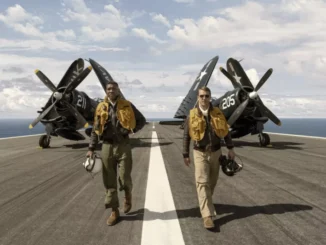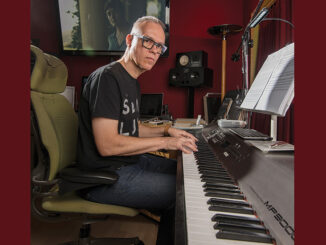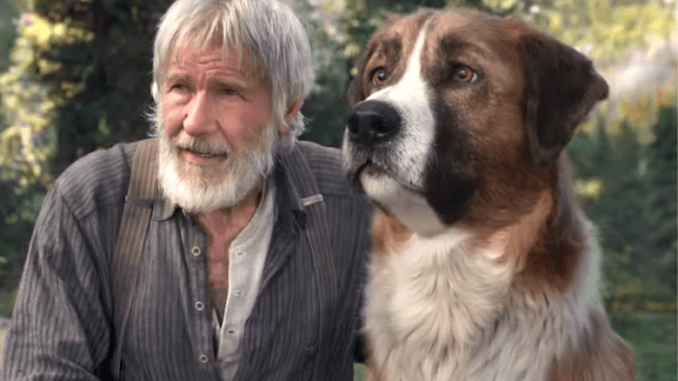
by Patrick Z. McGavin
The newest adaptation of Jack London’s 1903 adventure novel, “The Call of the Wild,” is strikingly different from its predecessors.
This time, the hero of the story, Buck, a 140-pound St. Bernard-Scotch Shepherd, is entirely computer-generated. The Pixar-trained animation director Chris Sanders is making his live-action debut.
The story tracks Buck’s story from an anarchic California house dog to his forced servitude against the backdrop of the late 20th century Klondike Gold Rush. Harrison Ford plays John Thornton, the most benevolent of Buck’s various owners.
In a CineMontage interview, the picture editors, David Heinz and William Hoy, talked about the particular challenges working amid extensive digital animation effects – and what that meant for retelling a classic story.
CineMontage: On a visually complex project like this, how would you characterize your working dynamic?
William Hoy: I think just to start, David had been in this picture a year before I was. He had edited the picture together in the pre-vis (pre-visualization) form.
Once we started getting dailies, I’d take the scene. When there was another complete scene, then David would cut that scene. At some point, we would overlap these scenes. When the picture came together, we would work on each other’s scenes.
There are some scenes in the movie that are David and his handiwork. Because of the complexity of some of these scenes, he just stuck with a certain scene. There are scenes that are the same for me. Because there are so many different elements, I stuck with the scene. A lot of
the movie we did overlap and exchange ideas from watching dailies at the very beginning and just talking about what the scene might be and what the important moments are.
David Heinz: It was pretty unique for an editor to be on the project that early. Honestly it was a really great opportunity. Normally we start when they start shooting, or sometimes before on smaller films. To be on nearly a year before the cameras started rolling was really an interesting opportunity. The reason being, the main character of the film is entirely CG. Buck is our protagonist, and Buck is an entirely animated dog who never speaks.
It was pretty clear to Chris Sanders, our director, that we were going to have to do some very meticulous planning even before they went and shot anything. That came in the form of pre-visualization. It was a great opportunity because as early drafts of the script came in, I was
able to work with Chris and help him visualize how he might put these scenes together.
As we started to get complete scenes in pre-vis, we started looking in full sequences, full reels and eventually we had a full version in either pre-vis or storyboard form, which proved really helpful in being able to see the larger picture.
The director, Chris Sanders, has extensive experience as an actor, writer and filmmaker in animation. How beneficial was his background?
David Heinz: I think there would not have been a way to make this film with a director who didn’t have the background that Chris did. Unlike the “Planet of the Apes” movies, for example, where that was all motion-capture, this was a fully animated performance. Chris was directing the animators in creating the moment to moment performance of the hero. To have that animation background and be able to speak that language was pretty essential to directing this film.
There have been multiple versions of this story, the best-known the 1935 William Wellman adaptation with Clark Gable. Did you reference that film at all?
William Hoy: David had a great DVD library. We always had a “movie of the day” playing. There were more than a few times when the Clark Gable movie was playing. What we would do sometimes is take a little break and watch that version and see how they would do something, or what they did with the dog. It was interesting to see what their limitations were and see what they were trying to say. I thought that was very valuable. We also watched movies like “Never Cry Wolf” (1983).
It really helped us think about things. What we have going for us is that we have a virtual world, and we can add things that they could never do in [the 1930s]. Now that we are free to do this, we thought about what we could do in this world that they didn’t have.
David Heinz: I think much more than referencing the other film adaptations, we were referencing the book. I have not seen all the other adaptations. The ones I have seen have been primarily about the human characters. One of the first things Chris said was we are going to try and make the whole story. The technology only exists now for us to be able to do that. There are scenes later in the movie that are entirely computer-generated, like Buck in the wilds meeting a pack of wolves. There would be no way to do that scene justice with live-action photography from the previous decades.
Terry Notary, the movement coach on the “Planet of the Ape” films, is credited with “live action reference performance.” You both worked on the “Ape” films as well. Was this a similar working dynamic?
William Hoy: It was quite different. Terry is a wonderful motion capture actor, and just a wonderful actor. He is very physical. What he did in this movie was more along the lines of giving the lead actors an eyeline. In that sense, the camera would follow in the physical sense those particularly physical movements we used.
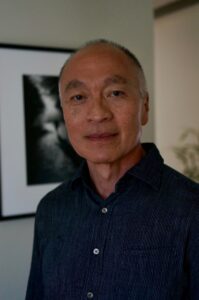
When Buck was running you could pace the camera moves. That’s a physical feat by itself. That scene where Buck is chasing the snowflakes, that took a lot out of (Notary). As far as the acting was concerned, unlike “Apes,” the motion-capture actors gave us a performance that could
be edited. I had performances I could craft, and mold that scene.
There are upwards of 250 people credit on the visual effects and special effects. That is a small army. Could you reflect on the difficulties of integrating that material into the traditional live-action cutting?
David Heinz: This was probably the biggest challenge we had in putting the film together. Normally we would have a performance to work with that we would track through the entire film. We didn’t really have a performance with Buck until much later.
What we might have is a shot of Terry Notary as a placeholder, or sometimes a storyboard or a bit of pre-vis. All of those early, rudimentary iterations will remain in the cut for many months until the huge team of animators, mostly MPC based in Montreal, have done their
work and send us animation dailies cut in for Buck.
William Hoy: I personally found this picture very difficult. The “Apes” movies were very difficult as well. This movie had its own sense of difficulties. I don’t have a performance. We were continually changing the picture, changing the scene, because sometimes we didn’t even have two continuous shots together.
There are so many aspects to a scene and so many layers of the visual effects that were constantly changing and moving things around. Once we get a shot closer to what the finished shot is going to be, then it changes other shots and might cause changes within the scene itself. It
was an ongoing process where things continued to be refined and refined. Concepts would change.
It was not until the very end where we could say this particular scene is now locked because we have final animation scenes. We can put this one to rest and concentrate on the other ones. It was all about constantly juggling these scenes that were up in the air.
The early California material is very subjective and captures everything from Buck’s point of view.
David Heinz: I think we were certainly trying to do that. It’s sort of a coming of age story when you think about it. Buck starts as a child and through the course of the film, he grows up. The early going has a child-like quality to it.
The camera is lower at the start of the film, as we are going through town, we are seeing things from his perspective. I think we did that very well in the scene where Buck first arrives in Alaska. He is being taken off the boat. We have a lot of moving POV shots that [cinematographer]
Janusz [Kaminsky] shot, and some very interesting framing where you are not quite capturing the human faces. It is scanning around, it feels overwhelming and you are very much in Buck’s perspective.
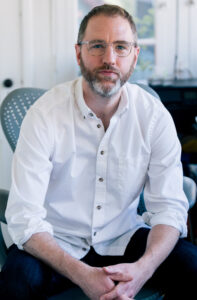
William Hoy: Harrison Ford brought a certain weight to that character. It impacts the whole second half of the movie. He has an impact on Buck that changes as well. Just by virtue of Harrison Ford the actor and what he brought to the picture and what his character is burdened with gave this contemplative feel to the end of the movie.
David Heinz: There is a pretty distinct shift from the first half of the film to the second half, in pace and overall rhythm. We didn’t necessarily sit down with Chris and say we were going to do it this way. As Buck goes further into the wilds and establishes this rapport with Thornton, the film naturally wants to slow down a little bit. You want to be able to take in the beauty of what they are seeing. The pace of life slows a little bit as you go into nature.
Because of the nature of the storytelling of Buck being shuttled from one owner to another, there is not a lot of classical character development. How did you cope with that?
William Hoy: I think the idea was to go out and shoot it traditionally and have the actors’ performance and we’d craft that. We have an idea of what Buck is going to do by following the spirit of the book. Here’s this rambunctious dog growing up in California who is thrust into the wilds. That is the story, and the human characters are part of that story. We have to do a service to our human actors. When they are looking at something, they are responding to something the dog is doing or they are part of the shot. The two have to be harmonious with that shot itself.
There are a lot of big action set pieces, like Francoise (Cara Gee) falling under the ice and the dog sled trying to outrace an avalanche.
William Hoy: Talking about the avalanche scene, David worked on the pre-vis, that scene is quite close to what the pre-vis was. As the picture came together, we were also introducing the character of the black wolf. We put that (avalanche) scene in there to indicate in times of need, Buck’s instinct would kick in.
The scene is also an example of when we get shots from the animators. We cut this scene as the pre-vis and the live action pieces cut in with Perrault (Omar Sy) and Francoise acting. I tried to put a pace and a tempo to it. So now it goes to the animators and they might sometimes
have different ideas. If a shot comes back and it is 30 or 40 frames longer than what was intended, it affects the actual pace of the scene.
It was an ongoing thing to say it has to be shorter, or we have to go in and jump cut or morph some frames out or give them a blueprint of how long we wanted a shot. We were constantly reframing scenes and giving different timing to have the scene work as an action scene.
David Heinz: In the avalanche sequence, the biggest challenge there is the only live-action footage of the entire sequence is Perrault and Francoise on the sled against blue screen. Everything else in that sequence is entirely computer-generated.
When you are taking on something like that, it takes a lot of imagination to cut a sequence like that together. That is an example of where the pre-vis is really helpful. We had a template, we had shots we could cut in, even if the timings were not right. You could cut a shot in,
you could re-time it, you could morph it, you could manipulate it in some way to give a sense of what the sequence is going to be. Just from a logistical standpoint, in terms of the challenges, we had so little live-action photography to use there it becomes a question of how the heck are we going to tackle this, and you just try to do it piece by piece.
Did you have discussions with Chris Sanders about finding time to let the movie breathe, and not let it be just constant action?
David Heinz: The pace and rhythm naturally slowed as it suited what Buck goes into the wilds. That scene where they are in the canoe, we tried a version that we cut way down to the bone. We watched it, and everybody felt like, No, we should take some time. It’s their journey and their moving from the city to the wild is their story and what we want the audience to be feeling here.
How did you ultimately resolve any differences of opinion?
William Hoy: Certainly we had differences and we were free to share it. The movie was quite a journey. The picture continued to evolve. Between the director and the animation director and a lot of people having a say, I believe we had that common thread and came up with the picture that we have. No ideas were rejected outright. It was not that kind of environment. It was very healthy as a creative collaboration.
David Heinz: Chris coming from his days at Disney and his work in animation, where I think there’s a much more creative collective, he really fostered that environment where all ideas were welcome and everybody could speak up. It was the idea that the best idea won. Honestly there were not that many times where we did not always agree on something.
What was the most satisfying part of working on this particular film?
William Hoy: For me, it was the idea of being integrated into the creative aspect and you can still dictate what a shot might be. If we are working on a movie and everything has already been shot, there are certain little things that we can do visual effects-wise. When you are working with a virtual character in a virtual world, some of the backgrounds are completely virtual, so as editors we certainly have a hand in putting it all together.
For instance, if we have the cabin and we put it here, and we have the background and we put it here, and we just put Buck here. What I think the scene should be is a wider shot, and Buck should be entering left to right and he should be doing these things and he should give a long
look. That we could still do after the fact of principal photography. I did find that part satisfying because it’s another layer of creative collaboration.
David Heinz: One thing I am very happy about is that audiences have really responded to the emotion of it. That is really gratifying. We are working with a main character who is entirely CG and never utters a word. With those limitations we are still able to elicit an emotional response from audiences. I feel a sense of accomplishment and pride. That is pure visual storytelling.
Patrick Z. McGavin is a Chicago-based writer and cultural journalist.


